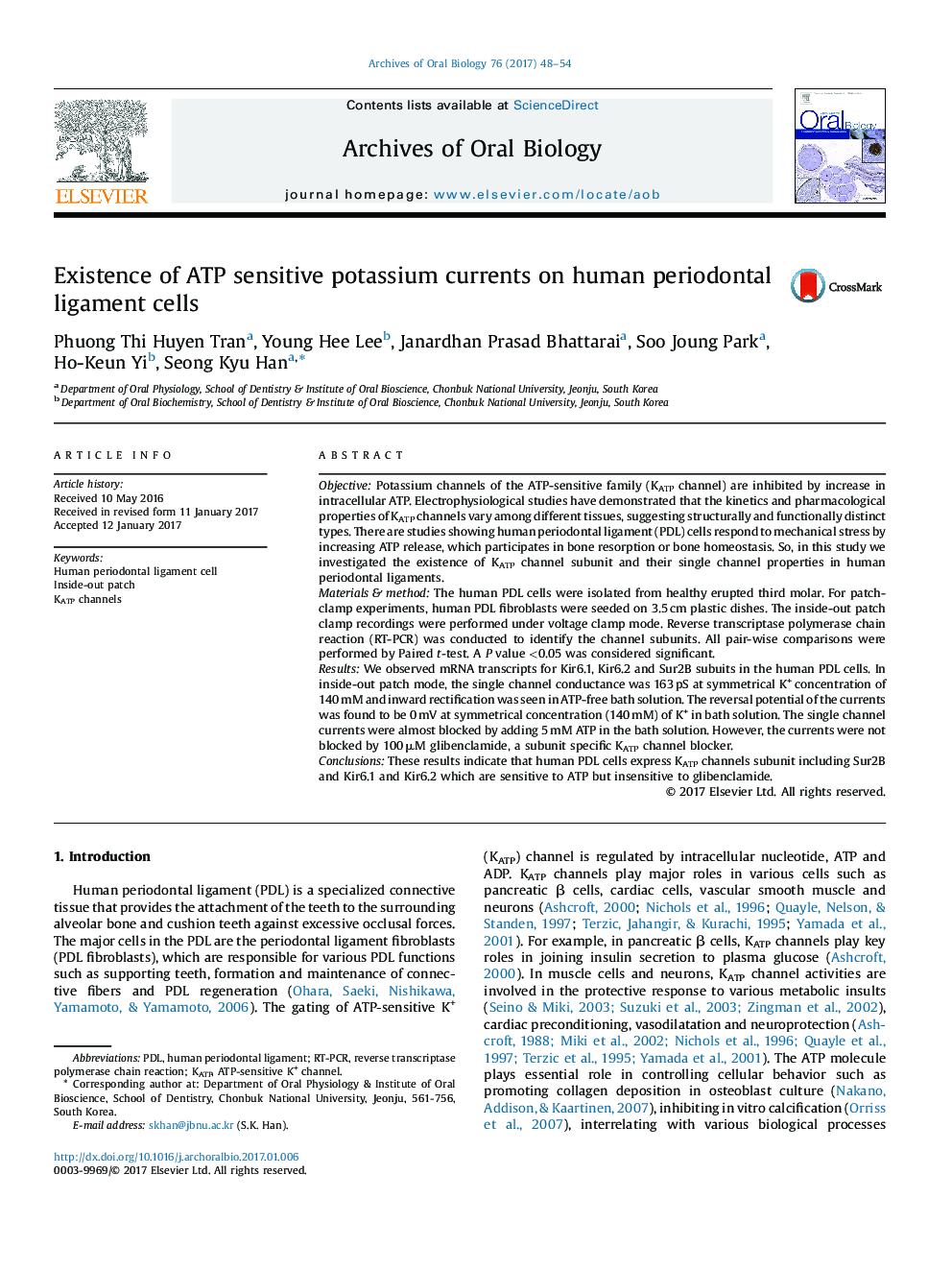| Article ID | Journal | Published Year | Pages | File Type |
|---|---|---|---|---|
| 5638050 | Archives of Oral Biology | 2017 | 7 Pages |
â¢Human periodontal ligament cell express potassium channel sensitive to ATP.â¢Human periodontal ligament express mRNA of Kir6.1, Kir6.2 and Sur2B subunits of ATP sensitive potassium (KATP) channels.â¢KATP channels expressed in human periodontal ligament cells have high slope conductance.â¢KATP channels expressed in human periodontal ligament cells have little voltage dependency.â¢The channel expressed by human periodontal ligament cells were sensitive to ATP but were insensitive to glibenclamide.
ObjectivePotassium channels of the ATP-sensitive family (KATP channel) are inhibited by increase in intracellular ATP. Electrophysiological studies have demonstrated that the kinetics and pharmacological properties of KATP channels vary among different tissues, suggesting structurally and functionally distinct types. There are studies showing human periodontal ligament (PDL) cells respond to mechanical stress by increasing ATP release, which participates in bone resorption or bone homeostasis. So, in this study we investigated the existence of KATP channel subunit and their single channel properties in human periodontal ligaments.Materials & methodThe human PDL cells were isolated from healthy erupted third molar. For patch-clamp experiments, human PDL fibroblasts were seeded on 3.5 cm plastic dishes. The inside-out patch clamp recordings were performed under voltage clamp mode. Reverse transcriptase polymerase chain reaction (RT-PCR) was conducted to identify the channel subunits. All pair-wise comparisons were performed by Paired t-test. A P value <0.05 was considered significant.ResultsWe observed mRNA transcripts for Kir6.1, Kir6.2 and Sur2B subuits in the human PDL cells. In inside-out patch mode, the single channel conductance was 163 pS at symmetrical K+ concentration of 140 mM and inward rectification was seen in ATP-free bath solution. The reversal potential of the currents was found to be 0 mV at symmetrical concentration (140 mM) of K+ in bath solution. The single channel currents were almost blocked by adding 5 mM ATP in the bath solution. However, the currents were not blocked by 100 μM glibenclamide, a subunit specific KATP channel blocker.ConclusionsThese results indicate that human PDL cells express KATP channels subunit including Sur2B and Kir6.1 and Kir6.2 which are sensitive to ATP but insensitive to glibenclamide.
